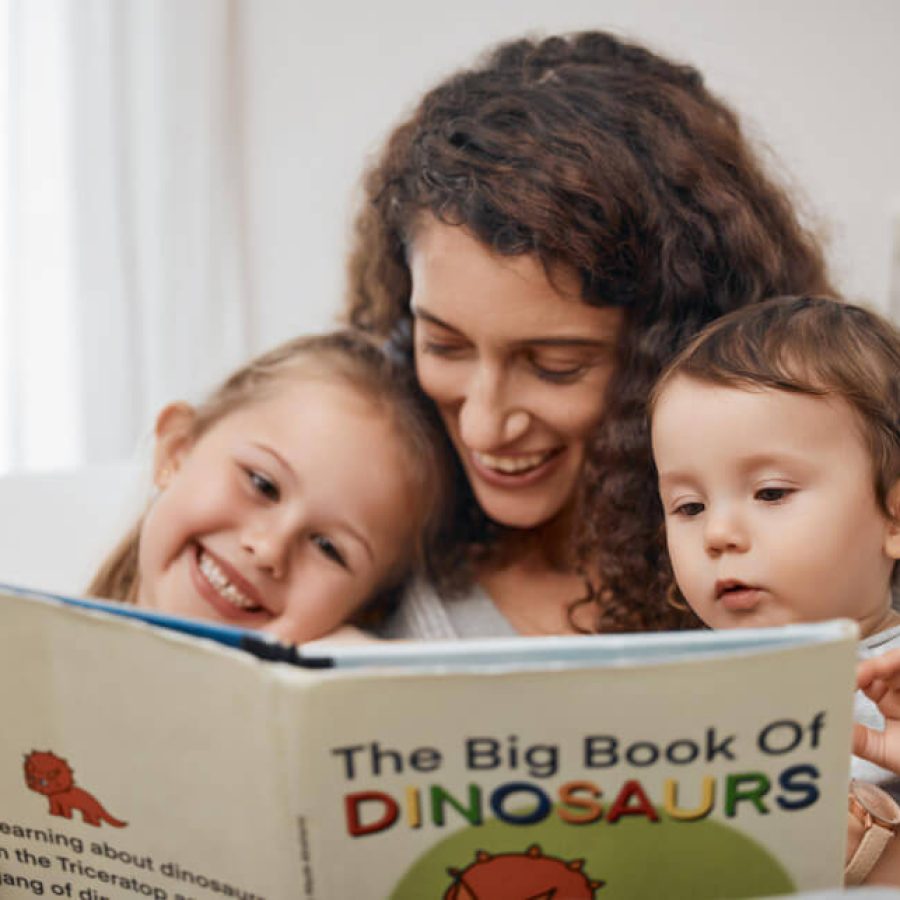We often think of playtime with the kids as something that involves a lot of toys and noise – which we also love! But there’s also a lot of value in reading to children as an exercise to stimulate them mentally just as much as your regular playday.
Reading to children is an everyday activity that offers numerous benefits, from enhancing cognitive and language skills to fostering emotional and social development.
When we read to our kids, we open up a world of imagination, curiosity, and learning turned into fun.
Here’s our guide on how to do it while having a great time!
Making The Best of Reading to Children
Practical ideas to get your reading game on point!
Keep it interactive
Create opportunities for children to participate. This could mean proposing imaginative activities (asking children to picture in their minds a certain scenario described in the book), daring them to guess the final word that makes a rhyme with the former sentence, asking them to describe what they see in a book picture.
While this is a good strategy to keep the children engaged during the reading, be mindful not to cause too much of a stir and prejudice you going back to reading the story. If the children are overstimulated, you can have a hard time getting them back into concentration mode.
Make it dynamic
Since your reading session also means spending time together, you want to have your child participating as much as possible! One way to accomplish that is by using some storytelling resources.
Do specific voices for each character, make sounds or adapt the tone of the reading according to the emotions being described in the book.
This will help keep the Little One interested!
Create a ritual
We know that keeping the Little One’s attention can be challenging, but you can work it around by creating a ritual that sets the tone prior to the reading.
You can propose a greeting ritual on the place they’ll be listening to the story, like setting up a specific place in the house.
Or you can come up with agreements like “go to the restroom before story time begins” or “only 1 story before sleep time”.
Expand their vocabulary with differents types of stories
From fairy tales and fables to adventure stories and biographies, each genre introduces unique vocabulary and different linguistic structures.
So you can not only have a great time with your Little One while you read together, but also help enrich your child’s vocabulary by exposing them to a wide range of stories.
Relate the words or story happenings with their own lives
Connecting the words and events in stories to your child’s own experiences can significantly enhance their understanding and retention.
For example, if a story is about a child’s first day at school, relate it to your child’s own first day and discuss the similarities and differences.
What Are The Benefits of Reading to Children?
They expand their pre literacy skills
Growing your child’s literacy abilities means they’ll have an easier time comprehending information and making sense of the world around them.
As we know that children are little sponges as they grow, it’s particularly important to stimulate this at an early age.
They grow a bigger vocabulary
Which allows them to become better communicators as they grow.
Knowing how to communicate properly is also important for their socialization skills, so it’s a win-win situation!
They develop a love for reading and writing
Reading is one of the ultimate methods to learn something, especially when it comes to diving deep into a subject.
Love for reading is helpful when children are preparing for important milestones in their lives, such as their SAT, a bachelor’s degree or other type of academic research, or merely entertaining themselves.
They expand their cognitive skills
When children read, it stimulates brain activity, enhancing their ability to concentrate, remember details, and process information. As a result, this mental engagement helps build strong neural connections that are essential for cognitive growth.
If that wasn’t significant enough, writing is also associated with creativity, which is another factor that counts for children’s cognitive development.
Reading to children at AEA
Our educators’ are committed to implementing the best educational practices. We do so in the hopes of contributing with the full development of our Little Explorers!
Each AEA unit prioritizes the moment of reading to children as a special part of the student’s day. If they have a great time reading at daycare, we hope they grow the love for it and do it throughout their lives!
We’d love to show you how we adapt fun activities into your students’ development. Choose the most convenient AEA unit for you and schedule a guided tour!


